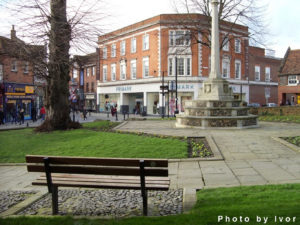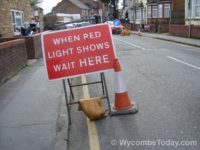Opinion : Just because a road has been gritted it doesn’t mean it’s safe to drive on

Earlier this week my good self had to visit a far away town with a colleague for business.
Naturally my work mate announced they would drive us both to the meeting. However they could see that my good self was not easy with the idea and started telling me of the benefits of their new, modern motor.
‘It’s got a colour co-ordinated interior with trimmed fabric seat covers, sun roof, powerful stereo and a cup holder for all the passengers too.‘ my colleague proudly announced.
The description of their vehicle sounded as if it was the sort of thing an elderly person would take shopping or be driven by a man who was not quite as masculine as expected. My reply to the description of their motor was short and to the point namely, ‘I say duck!‘.
On a cold and frosty morning the last thing one needs is to travel in a vehicle designed for its looks rather than performance in adverse conditions.
Not wanting to risk my personal safely yours truly insisted that we use my motor with my good self at the wheel.
It was jolly lucky that I had my way. Just past Princes Risborough, while travelling at nearly 50mph, we came across a patch of black ice lurking invisibly on the supposedly gritted road.
It was a most unnerving experience feeling the vehicle sliding sideways across the carriageway before, within a fraction of a second, the tyres regained grip and things were under control.
Now, there’s a lesson to be learned here.
Just because the gritters have supposedly been out the night before and treated the roads it doesn’t mean that every inch of road surface is free from ice.
I am increasingly becoming of the opinion that gritting is an activity that has become part of our society and nobody questions the effectiveness and implications of what is actually being done.
The simple fact is that just because the gritters go out it does not mean that every piece of road is ice free however everyone carries on as normal because ‘the roads have been gritted‘ taking with them a false sense of security that exacerbates the danger of the black ice that lurks waiting to catch out the unsuspecting motorist.
Here are some of my suggestions to improve the safety around the gritting operation :
- Treated roads should be identifiable by symbols added to the road signs along the road in question.
- When ice is expected speed limits should be lowered in the early morning hours to increase safety.
- Roads should be gritted twice with two light grit runs rather than just one normal run so patches of untreated road would be reduced.
- Locations where frost and ice linger should be identified with roadside signs.
- Places where water runs onto the road and washes away the grit should also be identified and signed so motorists know where the grit is likely to be washed away if water falls after the roads are treated.
Oh, and one other point, rather than buying a car because of its natty looks always buy a car with a proven track record and ability to deal with adverse conditions.*
What do you think?
*For anyone interested in seeing some proper cars, that are most definitely capable of dealing with icy roads, in action take a look at this clip on YouTube.
*My blogs are published every Tuesday and Friday evening around 8.00pm here on the WycombeToday.com website.
You can also follow me on Facebook at https://www.facebook.com/ivor.wycombe or on Twitter at https://twitter.com/Ivor_Wycombe.











